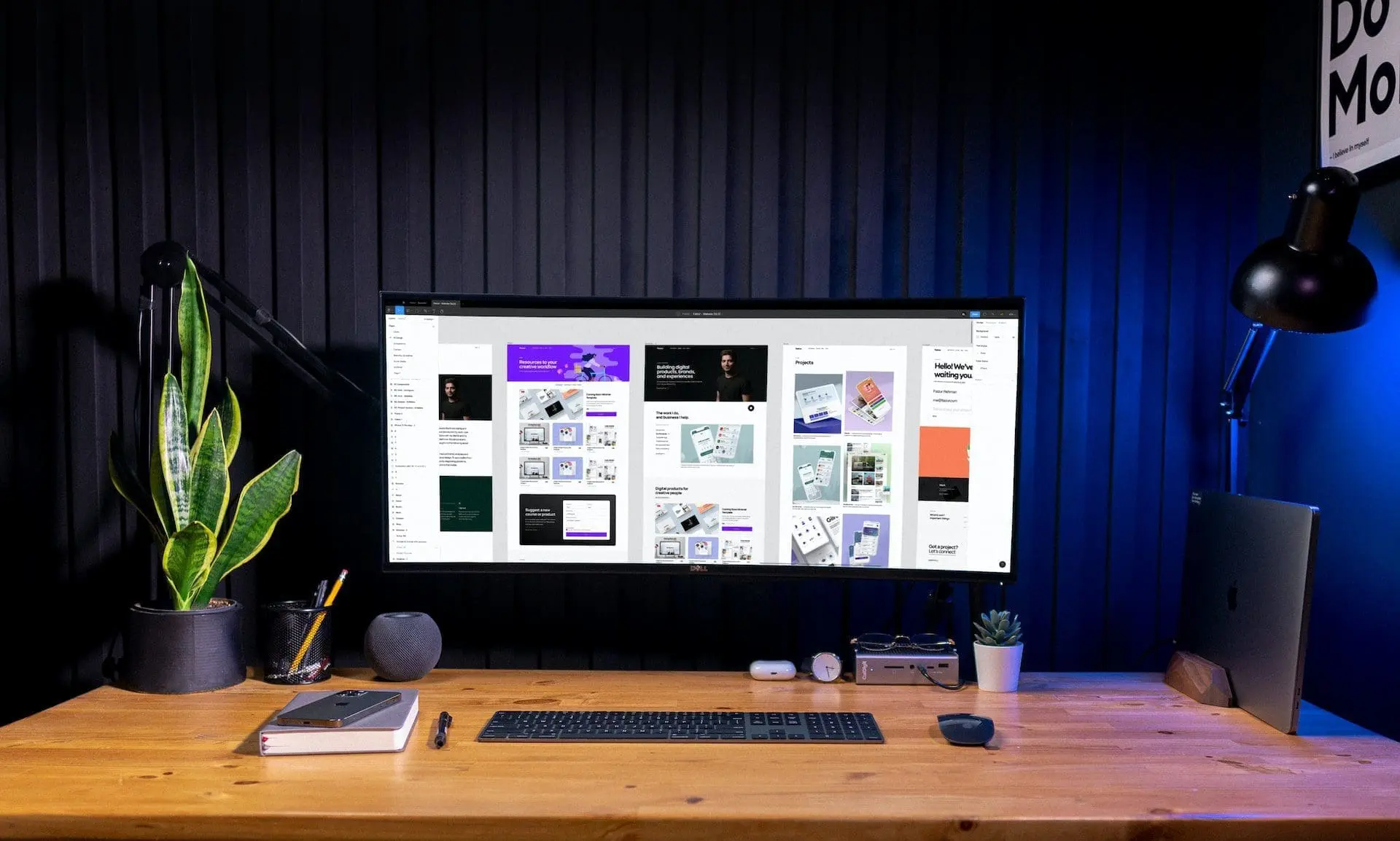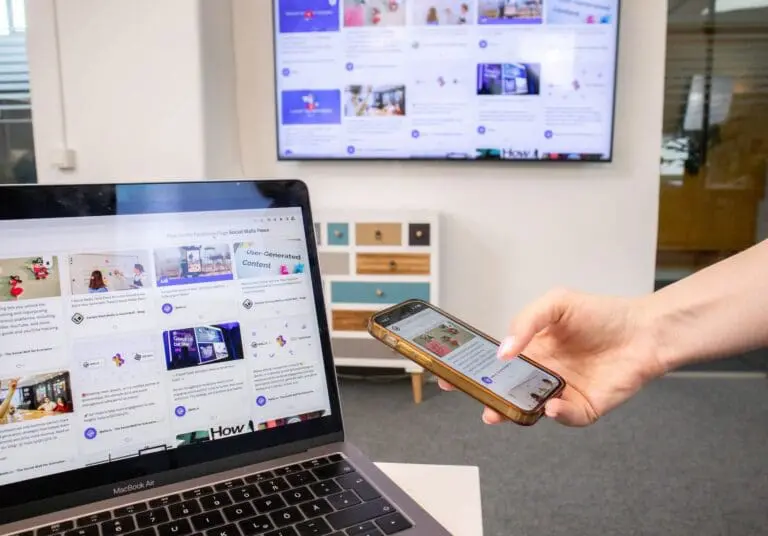Design
Elevating User Experience with Microinteractions One Detail at a Time
In the intricate world of web design, it’s often the subtle touches that make all the difference. Think about the times you’ve interacted with a website and something just felt… right. That feeling? It’s often courtesy of microinteractions. These seemingly minor details, sprinkled throughout a website, play a massive role in enhancing our online experiences. At heyreliable.com, we cherish these details, hand coding each one to perfection. No shortcuts, no plugins, just genuine craftsmanship to make your website not just another online space, but an experience to remember. Dive in with us as we explore the wonderful impact of microinteractions on user experience.

What is a Microinteraction?
You know that feeling when a light switch gives a satisfying click, or when your car door closes with a reassuring thud? Those details, though small, give you confidence in the product. Similarly, in the digital landscape, there are numerous little touches that might go unnoticed but play a pivotal role in making your web experience smoother and more enjoyable. These are microinteractions.
Microinteractions are the tiny details that, while often overlooked, play a massive role in a website’s success. They’re the animations that guide you, the feedback you get after completing a form, or even the subtle changes in a button when you hover over it. They’re not just design choices; they’re intentional, hand-crafted decisions made to enhance your experience as a user.
And at Hey Reliable, it’s our mission to code these microinteractions with care. Not by using shortcuts or ready-made solutions, but by understanding the user’s needs and then crafting these interactions from scratch. By doing so, we ensure your website feels alive, responsive, and most importantly, catered to your audience’s needs. In the upcoming sections, we’ll explore more about these intriguing elements and their significant impact on user experience.
Diving Into the Microinteraction Theory
At its core, the idea behind microinteractions is quite simple yet profound. It’s all about understanding and acknowledging human behavior when interacting with digital platforms. You see, humans naturally seek feedback. When we do something, we like to know it’s been acknowledged. And in the world of websites and apps, microinteractions serve this exact purpose.
Imagine pressing a button and getting no response—no change in color, no animation, nothing. You’d probably feel lost, right? Maybe even a bit frustrated? This is where microinteractions come in. They provide that soft nudge, that gentle indication that says, “I see what you did there, and here’s how I’m responding.”
This theory revolves around the belief that the best user experiences are those where the user’s actions, no matter how minor, are recognized and responded to in a manner that feels intuitive. It’s not about being flashy or over the top. Instead, it’s about making the user feel seen and understood, and enhancing their overall experience.
At heyreliable.com, this understanding is central to how we approach web design. We recognize the human desire for feedback, and we hand code every microinteraction to ensure that your website responds to users in the most authentic and intuitive way possible. So, as we continue, keep in mind that every microinteraction is a nod to human behavior, a small yet significant step towards a more user-friendly digital world.
Exploring Different Types of Microinteractions
It’s incredible how something so seemingly small can have a variety of manifestations, each serving a distinct purpose. Microinteractions aren’t a one-size-fits-all solution; they come in diverse forms, tailored to specific functions on a website or app.
Consider the reassuring confirmation you get after submitting a form. Or that subtle animation when hovering over an icon, giving a hint about what clicking it might do. Think about the playful ripple effect when you tap a button on a mobile app, or how items rearrange smoothly as you resize a browser window. These are all instances of microinteractions in action, each enhancing the user experience in its unique way.
Now, while these interactions may seem small, they’re all thoughtfully designed. Each serves a purpose, either guiding the user, providing feedback, or simply adding a touch of life to a static design. What’s beautiful is how these interactions, when executed well, can seem so natural that users might not even consciously notice them, yet their absence would make the experience feel incomplete or disjointed.
The team at heyreliable.com understands this intricate dance of subtlety and functionality. We take pride in hand coding these interactions, ensuring that they blend seamlessly with the website’s design while providing that essential touch of responsiveness. The goal is always to make the user’s journey smoother, more intuitive, and delightful.

Real-Life Microinteractions Examples
When browsing your favorite websites or using some of the apps on your phone, you’ve undoubtedly come across tiny design elements that made your experience just a tad bit more enjoyable. These are the unsung heroes of the user experience, and today, we’re putting a spotlight on them.
Picture this: You’re on an online store, checking out a product, and as you decide to add it to your cart, there’s a gentle animation of the item ‘flying’ into the cart icon. It’s a brief moment, but it brings a smile to your face and confirms your action.
Or how about when you’re typing in a password and an eye icon appears, allowing you to peek at what you’ve typed? That’s a microinteraction ensuring you’ve got everything right.
Then there’s the subtle shift in color when you hover over a link, signaling where you might be headed next if you decide to click. It’s these tiny moments that make a website or app feel alive and responsive.
Now, what makes these instances stand out is their natural, intuitive feel. They don’t scream for attention; instead, they gracefully support the user’s actions, making every interaction feel acknowledged and appreciated.
This attention to detail is what we, at heyreliable.com, thrive on. We believe that the essence of a great digital experience lies in these nuances. Every time we hand code a website, we’re not just thinking about the broader design; we’re also thinking about these moments, ensuring that every interaction on your site feels genuine and engaging. And as we continue, we’ll explore how these microinteractions play an even larger role in the overall user interface.
Microinteractions in UI: A Closer Look
Sometimes it’s the smallest gestures that make the most significant impact. In the bustling world of website design, amidst all the graphics, layouts, and content, microinteractions often play the role of that friendly neighbor who waves at you every morning. It’s a brief interaction, but it sets the tone for the day. Similarly, microinteractions help set the tone for how users perceive and experience a website.
The user interface, or UI for short, is essentially the bridge between a user and a digital product, be it a website or an app. It’s what the user interacts with, sees, and feels. Now, while the broader design elements like color schemes and layouts are undeniably essential, microinteractions add a layer of depth, making the UI not just look good, but feel good.
For instance, think about a volume slider on a music app. The way it smoothly transitions, giving real-time feedback as you adjust the volume, enhances your control over the experience. Or consider a website’s navigation menu that provides a gentle animation as you switch between sections, subtly indicating your movement.
These interactions might seem inconspicuous, but they contribute immensely to a user’s comfort and confidence while navigating a digital space. They’re like the seasoning in a dish, not always conspicuous by itself, but their presence (or absence) can make (or break) the experience.
At heyreliable.com, our approach to crafting UI is deeply rooted in this understanding. We recognize that a truly effective UI isn’t just about looking great; it’s about feeling right. And with every website we hand code, we make sure these subtle touches are woven into the fabric of the design, ensuring an experience that’s as delightful as it is functional. As we progress, we’ll discuss how these principles apply across various tools and platforms, ensuring consistency and brilliance wherever your digital presence might be.
Microinteractions in Figma: Crafting Digital Delights
Navigating the digital landscape means constantly evolving and adapting to new tools that help bring our visions to life. Figma, a versatile tool for designers, is one such platform that has transformed how we create and visualize. But what’s design without those fine touches that bring a smile or a nod of appreciation?
Microinteractions in Figma allow designers to incorporate these subtle elements right from the design phase, ensuring that they’re an integral part of the final product. Imagine a button that subtly pulsates when it’s the primary call to action, or icons that give a gentle bounce when interacted with. These are the details that make a design not just functional but also engaging.
But here’s the thing: while tools like Figma make it possible to visualize these interactions, the final experience is shaped when they’re brought to life in the coding phase. This is where the real artistry comes in. Taking a concept from a design tool and integrating it into a live website requires skill, understanding, and, yes, a lot of care.
This is what we’re passionate about at heyreliable.com. We see the vision in design mockups and hand code them into living, breathing websites. Each microinteraction, conceptualized in Figma, is meticulously crafted to ensure it transitions seamlessly onto the website, enhancing user experience just as it was envisioned.
As we venture further, we’ll touch upon why this continuity from design to development is crucial and how it shapes the way users perceive and interact with a digital platform.

Why Hand Coding Makes a Difference
In the bustling world of website development, there are numerous paths to creating a digital platform. Among these, hand coding has steadily held its ground as a preferred method for many. But what makes it stand out? Why, in a time of numerous shortcuts and rapid development tools, would someone choose the meticulous art of hand coding?
Imagine walking into a tailor’s shop. The tailor, with years of experience, listens to what you want, takes precise measurements, and crafts a garment that fits you perfectly. Hand coding is the digital equivalent of this custom tailoring. Instead of settling for a one-size-fits-all solution, you get a platform tailored to your specific needs and vision.
Hand coding allows for precision. With a deep understanding of the underlying code, developers can fine-tune every aspect of the website. This means faster load times, cleaner design, and a more responsive interface. It’s like crafting a sculpture, where every detail, no matter how minute, is given its due attention.
Furthermore, hand coding offers flexibility. As needs and trends evolve, a hand-coded website can adapt without the constraints often posed by pre-made templates or plugins. It’s about building with the future in mind, ensuring that the platform remains relevant and functional.
Then there’s the aspect of uniqueness. With hand coding, your website isn’t just another face in the crowd. It stands out, with distinct features and interactions that resonate with your brand’s personality and voice. It becomes an extension of who you are.
At heyreliable.com, we cherish the art of hand coding. We understand the difference it can make, and we commit to providing our partners with websites that aren’t just functional but are also uniquely theirs. As we continue, we’ll explore how the blend of microinteractions and hand coding creates a symphony in digital design, resonating with users and leaving a lasting impression.
In Closing: Crafting Digital Experiences with Heart
We’ve taken a leisurely stroll through the world of microinteractions and the meticulous craft of hand coding. These elements are more than just design and development choices; they’re statements of intent. They signify a commitment to creating digital experiences that not only serve functional needs but also touch hearts.
In a digital landscape teeming with platforms vying for attention, it’s the finer details, the gentle nods of acknowledgment, and the personal touches that set a website apart. It’s about ensuring that every visitor feels valued, every interaction feels genuine, and every moment on the platform feels special.
At Hey Reliable, this is our ethos. We’re not just about building websites; we’re about crafting experiences. In every line of code and every design decision, our goal remains constant: to create platforms where technology meets humanity, where code meets care.
So, as you think about your next digital project, remember the power of the little things, the significance of the handcrafted, and the potential of a platform built with passion and precision. Because in this vast digital expanse, it’s these thoughtful touches that truly make a difference.




